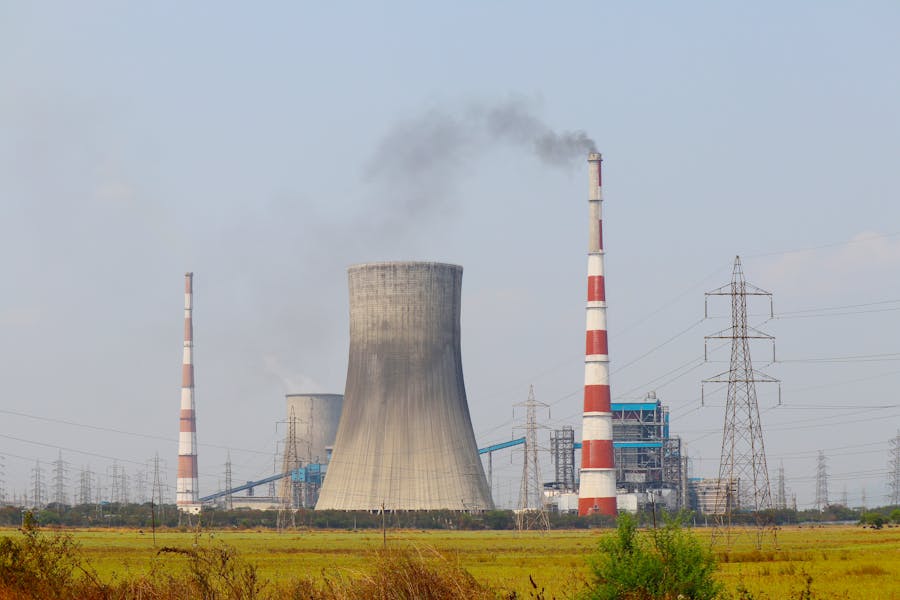Flue gas cleaning technology is a process where impurities and contaminants, including sulfur dioxide (SO2), nitrogen oxides (NOx), carbon monoxide (CO), volatile organic compounds (VOCs), and heavy metals are removed from gases that are emitted when fuel gases are combusted. Flue gas cleaning has become crucial in many industries, from manufacturing to petrochemicals and power generation, as cleaning impacts environmental pollution. In a world where industries are required to use sustainable solutions for combustion and combustion waste disposal, flue gas cleaning technology is paramount. In this article, we will explore the nuances of the flue gas cleaning system, its limitations, and innovative solutions to those limitations.
Flue Gas Cleaning System
Specific steps are needed to remove contaminants from fuel gas to reduce its environmental polluting capacities. Let’s explore them.
Nitrogen Oxides (NOx) Reduction: Nitrogen oxides are formed during high-temperature combustion processes. NOx contributes immensely to air pollution and acid rain formation when rain falls. Technologies used for NOx removal include Selective catalytic reduction (SCR), selective non-catalytic reduction (SNCR), and low NOx burners. The main purpose of these technologies is to convert NOx into non-harmful hydrogen and water. NOx removal is a crucial stage in flue gas cleaning systems.
Sulfur Dioxide Removal: Sulfur Dioxide is a major pollutant when fuel gas combustion contains H2S and other hazardous sulfur compounds. This is why it is imperative to convert harmful sulfur compounds like hydrogen sulfide (H2S) into non-harmful compounds before using fuel gasses in equipment. SO2 removal process in flue gas includes wet scrubbing, dry sorbent injection, absorption, and chemical reaction with sorbents like lime or limestone.
Carbon Monoxide (CO) and Volatile Organic Compounds (VOCs) Control: CO and VOCs are combustion byproducts contributing to air pollution and health hazards. Technologies employed for their removal include oxidation catalysts, adsorption systems, and thermal oxidizers.
Particulate Removal: Particulate Removal removes fine particles like dust, soot, ash, and aerosols from flue gas using electrostatic precipitators and fabric filters.
Heavy Metals Removal: Heavy metals such as mercury, lead, and arsenic are hazardous pollutants in flue gas emissions. Sorbent injection technologies, activated carbon adsorption, and chemical precipitation processes are used to capture and remove heavy metals from flue gas streams.
Particulate filtration: We can remove fine particulates like fine dust and aerosols through a high-efficiency filtration system. With bag filters that have sub-micron sizes, particulates can be trapped and disposed of.
Limitations in Flue Gas Cleaning Techniques
Energy consumption and cost: Many flue gas cleaning processes require immense energy input and considerable costs. Certain adsorption and absorption techniques are particularly complex and require complex setups and large-scale industrial facilities.
Complex setup: Flue gas cleaning is a complicated field, from the equipment to the processes and human resources needed. People must find innovative solutions that simplify the process, automate mundane tasks, and cut operational costs.
Regulatory compliance: Stringent regulatory compliance may affect older facilities. Upgrading a flue gas cleaning facility is a bottom-to-top process that can be costly. With stringent rules against sulfur, mercury, and heavy metals, the cost will impact general production costs in factories.
Innovative Solutions to Flue Gas Cleaning Methods
There are innovative solutions to the limitations of flue gas cleaning. While some are already in practice, others are still in the R&D stage. A flue gas cleaning plant with advanced technology will reduce cleaning costs because of reduced energy consumption and improved cleaning efficiency.
Advanced Sorbents: Advanced sorbents should have a higher adsorbent rate, improving cleaning efficiency, time, and costs. With advanced sorbents, mercury, and NOx can be removed with more efficient and smaller cleaning systems (and they require less energy).
Membrane Separation: Membrane separation is a lower energy consumption and scalable solution for the selective removal of contaminants like CO2 and SO2 from flue gas streams. Membrane-based separation requires lower energy when compared to traditional absorption processes.
Electrochemical Processes: Electrochemical processes for removing NOx and VOCs from flue gas are novel technologies. While technologies like cathode and anode setup for NOx removal and electrochemical oxidation of VOCs are impressive, they are still in developmental stages.
Hybrid Systems: Hybrid systems integrate cleaning technologies like adsorption, membrane separation, and absorption into a single system, improving cleaning efficiency, operation efficiency, and cost. Hybrid technologies allow flue gas to pass through a circular system where all contaminants are removed in a single cleaning system.
Data Analytics and Digitalization: With innovations in data analytics, artificial intelligence, automation, and digitization of cleaning processes, companies can now execute real-time monitoring, predictive maintenance, and optimized flue gas analysis to improve cleaning performance, sustainability, and reliability.
Conclusion
Flue gas cleaning systems are crucial to many industries that use fuel gas as combustion agents. Flue gas cleaning systems’ efficiency and environmental sustainability are important to ensure compliance with environmental requirements. With technological advancement and innovative solutions like advanced adsorbents, the flue gas cleaning process becomes faster and lessens the energy footprints of cleaning facilities. Circular hybrid systems also ensure that the flue gas is cleaned in a single cleaning system, removing the need to transport the gas from one point of cleaning to the other. Hybrid systems also improve efficiency and reduce waste and risks of accidents. While there are still innovative solutions to be discovered, it’s important for cleaning facilities to upgrade to systems that will improve their cleaning capacities, reduce costs, and reduce energy impact on the environment.

